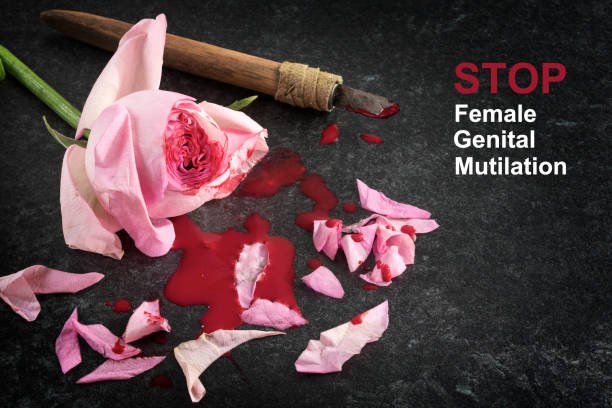 https://www.istockphoto.com/photo/risk-ahead-warning-sign-against-blue-sky-gm468755408-61208288
https://www.istockphoto.com/photo/risk-ahead-warning-sign-against-blue-sky-gm468755408-61208288
To stop the harmful practice, the United Nations created the International Day of Zero Tolerance for Female Genital Mutilation, observed every year on February 6. The United Nations Sustainable Development Goals also call to end the practice by 2030.
The following are some female genital mutilation facts and frequently asked questions.
What is female genital mutilation?
Female genital mutilation is defined as the removal of part or all of the female genitalia for nonmedical reasons. It is also called female circumcision and cutting. The procedure is most often done to girls between birth and age 15.
What are the consequences of FGM?
Often carried out under primitive and unsanitary conditions without anesthetic, FGM can cause severe pain, bleeding, and swelling that may prevent passing urine or feces. In the long term, it leads to chronic pelvic infections, urinary tract infections, and birth complications for mothers and children. The horror of the event — including being physically restrained against their will — affects many women for years. There are no health benefits from the procedure, which is not medically necessary or condoned by the World Health Organization, most governments, and reputable medical associations.
Where is FGM practiced?
FGM is practiced in 31 countries in Africa, the Middle East, and Asia. It’s most prevalent in Djibouti, Egypt, Guinea, and Mali, where 90% or more of women aged 15 to 49 have been subjected to FGM. With record levels of migration in the last decade, migrants have also carried the harmful practice with them to other countries, including Australia, New Zealand, the United Kingdom, the United States, and Japan.
Why is it still practiced?
Most girls and women familiar with FGM say they would like to see it end, but there is social pressure to continue cutting. Mothers, fathers, extended family, and community leaders may force or coerce girls and young women to be cut so that they will be accepted as “clean” and ready for marriage.
Signs FGM might have taken place
Having difficulty walking, standing or sitting.
Spending longer in the bathroom or toilet.
Appearing quiet, anxious or depressed.
Acting differently after an absence from school or college.
Reluctance to go to the doctors or have routine medical examinations.
istockphoto-859117994-612x612.jpg]( )
)